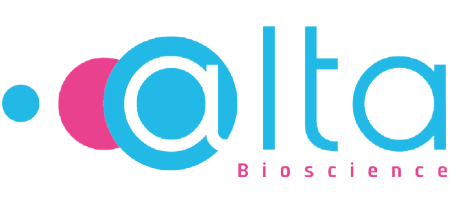Peptides for Raising Antibodies
Antibodies are large Y-shaped proteins, also known as immunoglobulins, that are produced by the host’s immune system when challenged by a foreign substance or antigen, such as pathogenic bacteria, viruses, proteins or peptides. Antibodies are the lifeblood of biotechnology and can be used as therapeutics or as detection tools to detect specific proteins in a wide range of molecular biology applications such as western blotting, immunohistochemistry or ELISA assays. Although they can be generated by using native proteins as immunogens, peptide antigens offer significant advantages in that they are inexpensive and can be verified by mass spectroscopy and HPLC to provide the exact specific sequence needed to generate antigenic peptides in order to raise antibodies against specific epitopes. Such antibodies raised to small peptides are particularly useful for detecting post-translational modified sites or specific protein isoforms.
Short synthetic peptides of less than 15 amino acids usually tend to lack immunogenicity, however careful design of the immunogen during peptide synthesis can ensure it will be large enough to be detected by the immune system and elicit an immunogenic response.
This article discusses the various strategies we employ at AltaBioscience to make sure your required custom peptides will be suitable to use as immunogens and trigger a strong immune response when raising antibodies. Our solutions include the synthesis of multiple antigenic peptides (MAPs) or the synthesis of peptide conjugates with larger carrier compounds such as PEG or proteins. The method used will depend on the peptide sequence and our team of experts will be able to discuss and advise on the best options available for your antibody project.
Multiple Antigenic Peptides (MAPs)
MAPs are dendrimer structures, usually octameric, with peptide chains branching out from a central poly-lysine core. The amino acid lysine is often used for the scaffold since it contains two amino groups at the alpha and epsilon positions, which makes it well-suited for creating branching points where peptide antigens can be attached. MAPs are often used in immunological applications since the eight peptide chains sufficiently increase the molecular weight of the compound to be detected by the host and trigger a strong immune response in order to raise antibodies. It is also possible to make chimeric MAPs containing two different peptide sequences, each forming four of the chains of the 8-branched structure. This option could provide a method of presenting two peptide antigens in a single inoculation.
There are two main strategies to synthesise MAPS:
– a direct or divergent approach where the peptide antigens are synthesised in a stepwise manner entirely by solid-phase peptide synthesis (SPPS) starting from the poly-lysine core.
– an indirect or convergent approach where the antigens are synthesised first by SPPS, then coupled to the poly-lysine core via chemical conjugation. Due to steric effects and additional protection and deprotection steps of the amino acid residues, this method is best avoided due to the increased number of steps and complexity and the possible incomplete number peptide antigens being conjugated to the poly-lysine core.
Our chemists have extensive expertise in synthesising MAPs and will provide support when choosing the peptide antigens. In case of difficult peptide sequence, our experts may test the synthesis of the peptide first by SPPS before attempting the synthesis of the corresponding MAPs. We also offer an optional purification service where MAPs are purified through a 2-3kDa membrane.
Purification of any serum can easily be achieved using our peptide affinity columns. Here, a linear version of your peptide is immobilised on a support for use in serum purification.
PEG-Peptide Immunogens
An alternative to MAPs is immunogens made from peptides conjugated to polyethylene glycol (PEG), a hydrophilic polyether compound that helps with the solubility of the peptide immunogen within the host. Although PEGylation may shield the peptide antigen and reduce its immunogenicity, its increased molecular size has added advantages providing a prolonged residence post-inoculation and a decreased degradation by proteolytic enzymes.
Peptide–Protein Conjugates
By conjugating keyhole limpet haemocyanin (KLH), bovine serum albumin (BSA) or other suitable proteins via a linker molecule, peptides can be prepared for use in antibody generation. The size of the protein triggers the immune system, which recognises the attached peptides. The most popular carrier proteins are BSA and KLH, which elicit a strong antibody response and contain a very large number of lysine residues which are used to attach the peptide antigen.
This particular approach can be used to attach the peptide in any orientation, i.e. at either the N or the C terminus. However, it is not suitable for peptides containing cysteine, as that amino acid is added to the sequence to act as the linker to the protein. Read more about peptide conjugates.
Peptide Antigen Design Considerations
We have considerable experience in peptide antigen design and will work with you to select the best peptide targets for an increased chance of success when raising antibodies. In general, peptides for antibodies will be hydrophilic and flexible, coming from the exterior of the parent protein. We use a range of computational tools to predict the structures. For instance, a hydrophilicity plot will indicate which parts of the protein are likely to be on the outside of the structure. The Kyte-Doolittle or the Hopp-Woods algorithms will be very useful in detecting hydrophobic regions. Structure predictions can be made with Chou-Fasman plots. Peptide epitope regions containing cysteine should be avoided where possible as these, in nature, would present a very different shape to the immune system compared with the disulphide-bridged cysteine.
In addition to our peptide synthesis service, we provide full monoclonal and polyclonal antibody generation and purification programmes where we can simultaneously synthesise the peptide antigens and the corresponding affinity columns for use in antibody purification.
For further information on peptide synthesis or purification options, please contact us.
Author: Sat Sandhu, Principal Peptide Chemist.



